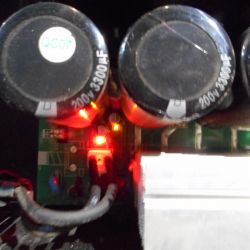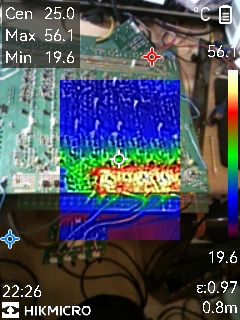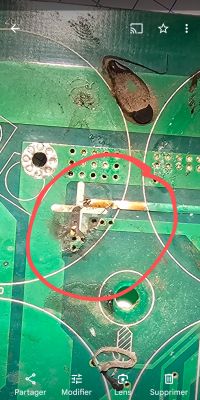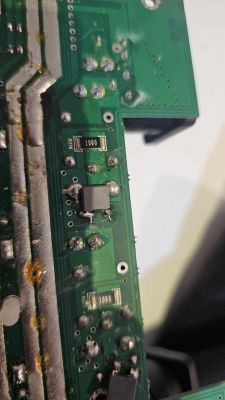>>21375612 .
Robercikxxx wrote: Please go ahead. If you put fuses on the top transistors then if a transistor fails there will be no blowout just the fuse will burn out.
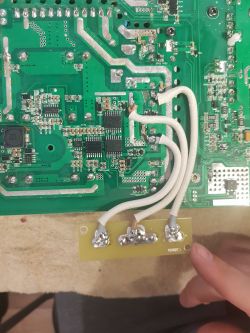
.
gaspixx
Symmetrical power supply - you will work like a wild boar !!! give it to yourself.
1 - Foreman and not better for you to cut the tracks as in this picture.
2 - run the power supply checking the waveforms with an oscilloscope on the gates of the main transistors on the power supply and be careful if you want to observe both waveforms at the same time because you will make a short circuit with the common ground and you're ready to explode - I had like that

.
3 - then you MUST measure absolutely all the parts around the power supply key transistors - all those faders, diodes, resistors etc. there are if I remember correctly 6 pieces per transistor, 24 components to check.
4 - then you check all the rectifier bridges for short circuit and transition - you have 3 of them.
5 - then you check all the transistors that are on the terminals on those long heatsinks for short and transitions - this is easy because you have 4 channels so you have something to compare them to - there are over 40 of them.
5 - then finally the commissioning - I put a 1 kW heater in series !!! without this it is very important not to even think about starting up.
6 - then with the farelka you test by fastening on the load instead of the column a simple 25 watt 250V bulb and go over the clip - here and only here you can use a sine wave.
7 - once you have succeeded in doing this you then put the flare on 2kW of power fasten the column and you can play quietly one at a time on all the channels to see if it will play at all.
8 - once you've got that going you do a normal test without the flare - 500 watt resistor. 8 ohms to the output (not 4 because you're asking for an explosion) and you go to the clip on a CF waveform of about 8 dB - NO SINUSOID because you're asking for another explosion, this amp is for music not sine wave, the waveform I can give you as an MP3

I made it myself

.
9 - once you get it right you jump to the ceiling with joy screaming hooray I did it !!!






---
I did it this way

thanks to the whole forum for the knowledge shown here


